This is a Sony FE 400mm F2.8 GM owner experience report from Ern Reeders who is a member of our Sony Alpha Wildlife Shooters Facebook Group.
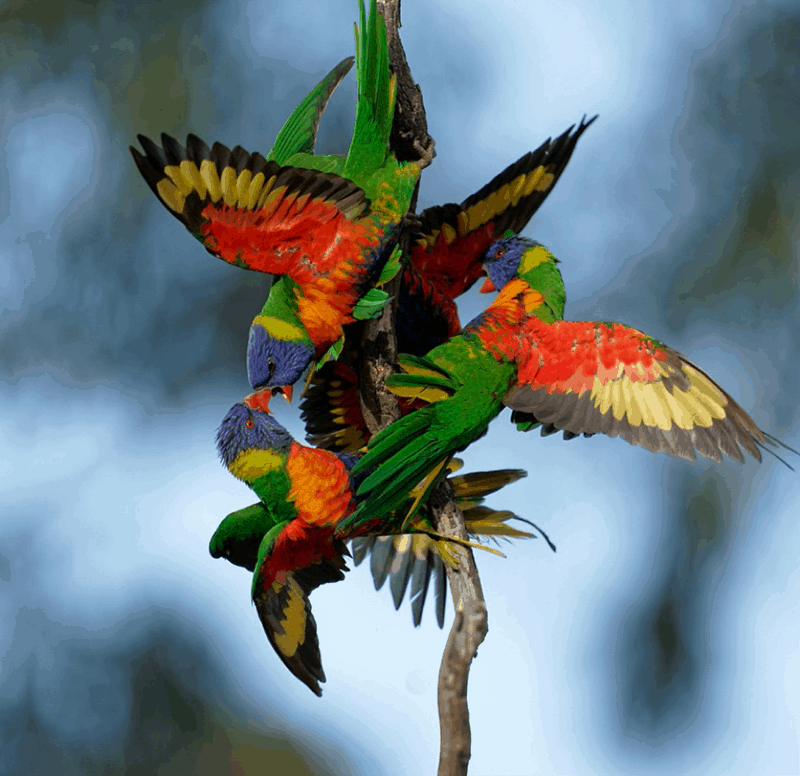
Rainbow Lorikeets having a friendly wrestle. Those colours haven’t been tarted up in post. Shot at f4, the blurring of the background is what you get for your money. ISO 500, 1/3000s, A9 with 1.4 TC
Living with an FE 400 f2.8
This isn’t a review. It’s about what a long Sony prime is like to live with. There are plenty of example images published on the web and there’s some reviews and impressions.
I’ve been intensively shooting birds for several years and a year ago paired the A9 with the 100-400mm & 1.4 TC. The images are crisp and stand up well to cropping.
But 560mm isn’t long enough for many subjects, particularly BiFs. That lens works well enough with the 2x TC if there’s lots of pixels on the bird and good light but often that’s not possible.
I got the 200-600 but the images with the 1.4 TC didn’t satisfy me so it was time to bite the bullet (ouch).
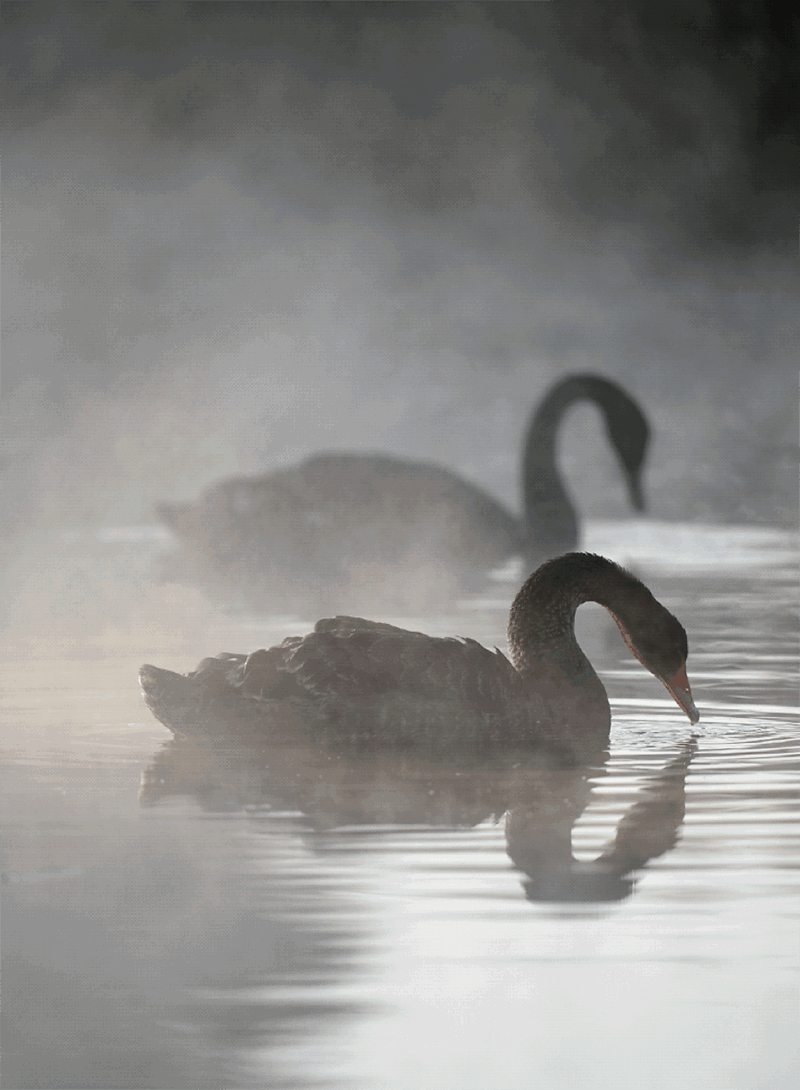
A good shot has light, composition and moment. It doesn’t need stratospheric resolution.
Which prime?
For birds 600mm is the price of admission and a focal length around 750-850mm gets you into the stalls.
The Sony 600mm is about as heavy as the 400mm but noticeably longer and as a walk-around handholding shooter that’s a minus. Alex Phan reports that the length means it’s not a carry-on luggage proposition.
Example images on flickr etc from the 400 with either of the TCs show very good image quality. Sony Ambassador Marc Alhadeff’s testing showed no or little reduction in AF speed and IQ.
The 400 would give me three usable focal lengths and still be OK for getting in and out of cars with and for walking around. So that was my choice.
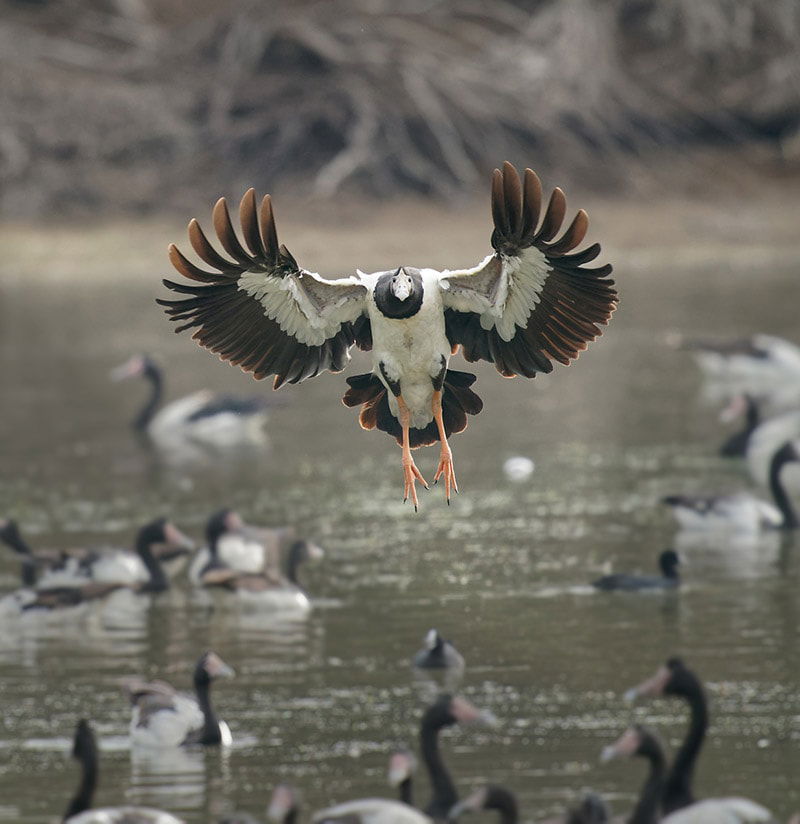
Magpie Goose landing, A9, FE400 & 2 TC, ISO 2500, f5.6, 1/3200s
Using it
With a body and accessorised with grip, strap, Lens Coat etc, the rig is 4.5 kg.
Reviewers have said that most of the glass is closer to the back than the front of the barrel which makes it feel lighter than it is, and that’s proved to be true. I have however dropped the grip in favour of a grip extender to extend my lifting time and it has to be said that you get a free workout doing this – you need to be fairly fit. Another reason for dropping the battery grip is that with all the hefting its controls get readily knocked and changed.
I’m often using the ‘knee pod’ to support the rig if a promising subject is taking it’s time to do something interesting.
The Lens Coat means that the function ring and barrel buttons can’t readily be felt and activated. For me that’s no loss.
On my first pelagic cruise I got a drenching. The lens is probably up to it but the A9 isn’t weather sealed. I looked into rain covers and opted for the Aquatech Storm Shield XL.
With a minimum aperture of either 2.8, 4.0 or 5.6, all of a sudden there’s choices to be made cp the f8 minimum of the older lens and TC I’ve been using. f8 isn’t a bad choice for BiF as the depth of field that gives you focus wriggle room. But smaller apertures offer you scope for subject separation and I’m really enjoying having that for perched birds.
The extra light also improves AF reliability I think. With the 1.4 TC the rig did very well to focus on birds’ faces among the reeds.

Black Swans, A9, FE400 & 1.4 TC, ISO 320, f4.5, 1/3000
Carrying it
It comes with a hard case with cutouts for the teleconverters and some filters.
To carry it with the lens hood and body fitted requires an aftermarket bag or padded cube. I got the LowePro Lens Trekker 600.
It comes with a strap that fits to the lens for hanging from the neck. That works OK but I prefer my Cotton Carrier Skout to carry it hands-free when I’m XC skiing or clambering around a boat. I mount the hub on an extension plate bolted to the foot; that’s necessary to lower the centre of gravity and stop the whole rig pivoting.
The rig is about 53cm long and the sun hood is 18 cm in diameter. That really sticks out in front of you and takes way more care than the 100-400 with TC. Banging and breaking that carbon fibre sun hood would be painful.
The lens cap is a bone-headed idea. It’s a partly soft hood that only fits when the sun hood is reversed. If you want to change your shooting location without messing around with the sun hood while still covering the front element there’s the Op/Tech USA XXXX Large Hood Hat. This is soft neoprene.
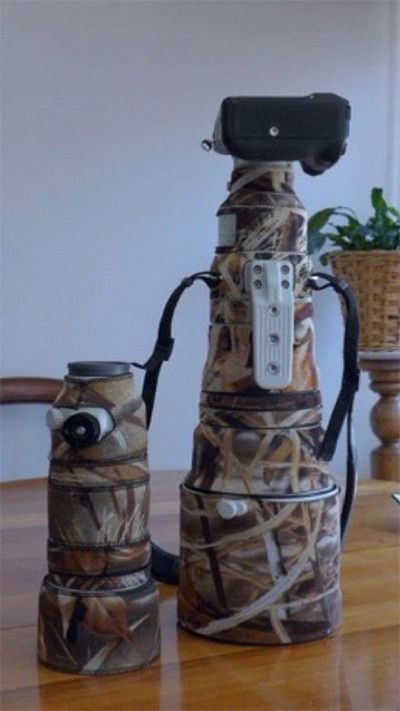
On the right: A9, FE400 & 1.4 TC, sun hood extended. Left: FE100-400 sun hood extended.
Build quality
The elements are said to be made within a tolerance of a tenth of a micron.
LensRentals has done a tear down and concluded it matches the build quality of the equivalent Canon, which it described as the gold standard in lens manufacture.
Sony is learning.
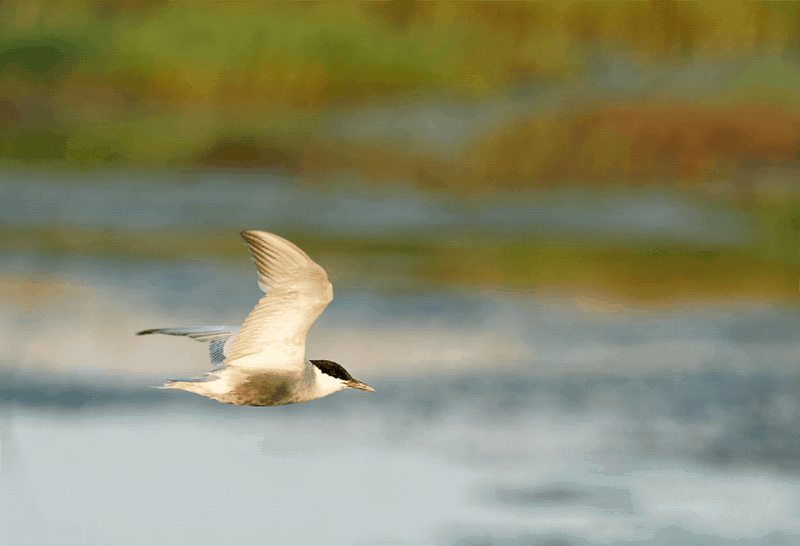
Whiskered Tern – A9, FE400 & 1.4 TC at f4, 1/2000s, ISO 1600
Hi res with hi res?
I gave in to the itch for a hi res sensor and got an a7R III during the sales.
My trainer wheels are still on and there’s quite a few soft shots but when it comes together the results are superb.

Black Swan running to get airborne – A7R III, FE400 & 1.4 TC, f7.1, 1/3200s, ISO 3200
Wishlist
A lens cap.
A hard case with a cutout for one of the larger bodies to remain attached.
OSS that can be controlled by software from the camera. When you’re shooting a perched bird in mode 1 you lose shots if you try to move to mode 2 if it takes off, and there’s no hope of doing it in time with a Lens Coat on.
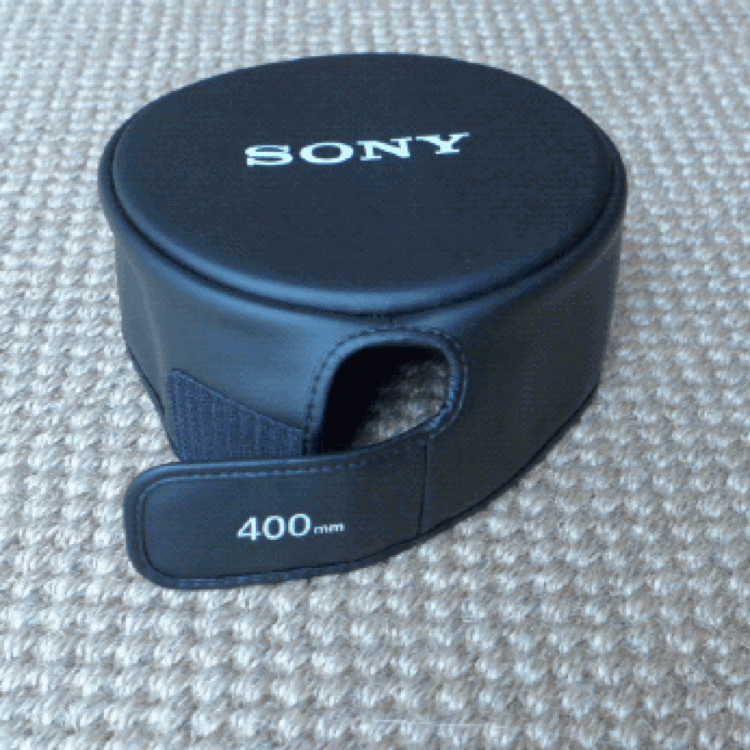
The lens cap. Minor redesign could produce something to work on both ends of the sun hood.
Update July 29th 2021
After about 9 months I found an increasing rate of soft shots. I worked harder at the settings and wondered about my own skills till finally I did some testing of the AF.
I used a knock-off of a LensAlign scale set at 10 m from the A9 and lens on a tripod, using various settings and both TCs. The rig was actually focussing 3 cm behind where it thought it was. With the shallow depth of field of long lenses, that was enough to render most small bird images soft.
Sony’s response was both very good and seriously bad. My dealer was moving shops and not responding to my emails. Sony however did respond to an email, on a weekend, and by the Monday they’d authorised testing at the local agent. He took the lens and both TCs. He found back focussing too and Sony approved him sending the lens and TCs to Japan to be fixed.
After six weeks there was no result so I complained to Sony. They offered and I accepted a 600/4 loaner to use in the meantime. There was still no action over the next 6 weeks and I complained repeatedly. When the agent told me they’d been in touch asking to get sample images from the tests months before I lost patience and formally notified Sony Australia that I would take action under Australian Consumer Law if the lens was not in 10 days fixed, replaced or refunded. They replaced it.
What I learned: I found two UK users had had the same experience. For one the lens was brand new. He was told there was nothing wrong with it but still offered a trade-up deal on a 600/4. It appears that movement is possible in the focussing element or motors. Very little is needed to produce this issue. The agent said he’d advised Sony that their super telephoto lenses ought to be made adjustable.
I was glad to spend some time with the 600/4. It confirmed my decision to go with the 400. The extra 4 cms of length did cramp my style. I suspect however that the 400 with 2x TC isn’t as reliably sharp with BIF as as a 600 with 1.4x TC. The local agent also does work for Nikon and Canon and appears to know his stuff. He made the passing comment that one of my AF bugbears with the A9, failing to lock on a small static bird, was due to the small on-chip PD sensors getting confused. So this is a software problem. The Canon R6 also appears to display it.
Summary
Pros: Fast AF, excellent IQ, little or no loss in adding TCs, high potential for cropping, scope for subject separation.
Cons: Cost, some folk will need to use a mono/tripod.
Ern Reeders
Melbourne, Australia, 14.1.20.
Visit Ern’s Flickr account to see more of his bird photography.
Ern also runs the Birds of Kiewa Valley and Mountains Facebook Group where you’ll also find his document on bird photography tips.
If you would like to share your own Sony Alpha camera or lens experience then please use the contact form to get in touch.
* Check Prices for the Sony FE 400mm F2.8 GM OSS
US: (#afflinks) Amazon.com | B&H Photo | Focus Camera | Adorama
UK: (#afflinks) Amazon.co.uk | Wex Photo | Park Cameras


Leave a Reply